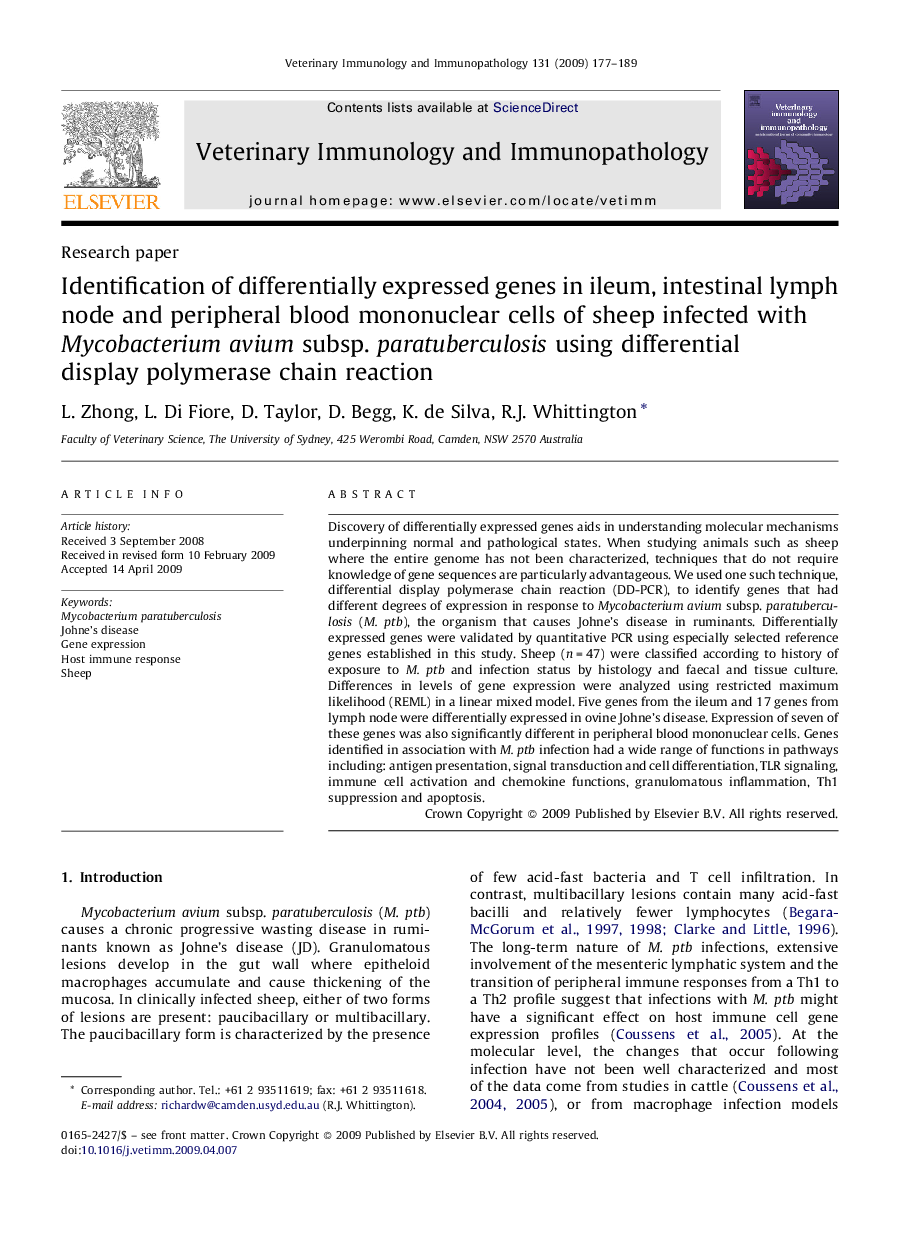| Article ID | Journal | Published Year | Pages | File Type |
|---|---|---|---|---|
| 2462564 | Veterinary Immunology and Immunopathology | 2009 | 13 Pages |
Discovery of differentially expressed genes aids in understanding molecular mechanisms underpinning normal and pathological states. When studying animals such as sheep where the entire genome has not been characterized, techniques that do not require knowledge of gene sequences are particularly advantageous. We used one such technique, differential display polymerase chain reaction (DD-PCR), to identify genes that had different degrees of expression in response to Mycobacterium avium subsp. paratuberculosis (M. ptb), the organism that causes Johne's disease in ruminants. Differentially expressed genes were validated by quantitative PCR using especially selected reference genes established in this study. Sheep (n = 47) were classified according to history of exposure to M. ptb and infection status by histology and faecal and tissue culture. Differences in levels of gene expression were analyzed using restricted maximum likelihood (REML) in a linear mixed model. Five genes from the ileum and 17 genes from lymph node were differentially expressed in ovine Johne's disease. Expression of seven of these genes was also significantly different in peripheral blood mononuclear cells. Genes identified in association with M. ptb infection had a wide range of functions in pathways including: antigen presentation, signal transduction and cell differentiation, TLR signaling, immune cell activation and chemokine functions, granulomatous inflammation, Th1 suppression and apoptosis.
